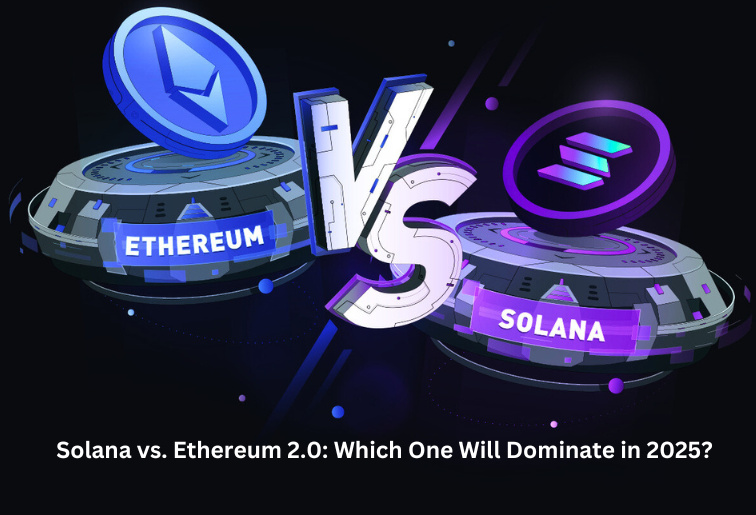As blockchain technology continues to evolve, two major players stand out in the race for dominance: Solana vs. Ethereum 2.0. Both offer unique advantages, but the key question remains which one will lead the market in 2025? Let’s dive deep into the Solana vs. Ethereum scalability debate and analyze their potential for the future.
Understanding Solana Blockchain
Solana blockchain is known for its lightning-fast transaction speeds and low fees, making it a favorite among developers and investors. Unlike traditional blockchains, Solana uses a unique Proof-of-History (PoH) mechanism combined with Proof-of-Stake (PoS), allowing it to process thousands of transactions per second (TPS).
Advantages of Solana Blockchain:
- High Scalability: Solana can handle up to 65,000 TPS, significantly higher than Ethereum.
- Low Transaction Costs Gas fees on the Solana blockchain remain incredibly low compared to Ethereum.
- Growing Developer Many NFT and DeFi projects are migrating to Solana due to its efficiency.
Ethereum 2.0: The Next Evolution
Ethereum 2.0, or ETH 2.0, is Ethereum’s ambitious upgrade aimed at addressing scalability and high transaction costs. By shifting from Proof-of-Work (PoW) to Proof-of-Stake (PoS), Ethereum 2.0 promises to enhance efficiency while reducing energy consumption.
Key Improvements in Ethereum 2.0:
- Sharding Technology: helps distribute network load, increasing scalability.
- PoS Mechanism: Enhances security while reducing environmental impact.
- Smart Contract Superiority: Ethereum still dominates the smart contract space with its robust ecosystem.
Solana vs. Ethereum Scalability: Who Wins?
One of the most critical factors in determining blockchain dominance is scalability. Here’s a head-to-head comparison:
| Feature | Solana Blockchain | Ethereum 2.0 |
| TPS (Transactions Per Second) | 65,000+ | 100,000+ (expected post-upgrade) |
| Transaction Fees | Low (fractions of a cent) | Variable, but expected to be lower post-upgrade |
| Consensus Mechanism | Proof-of-History + Proof-of-Stake | Proof-of-Stake |
| Smart Contract Adoption | Growing | Industry Leader |
| Network Stability | Some outages reported | Highly secure but currently
slower |
The Future of Blockchain: Which One Will Dominate in 2025?
Why Solana Could Lead:
- If Solana blockchain continues to maintain its high transaction speed and low fees, it could attract even more DeFi and NFT projects.
- Its ease of use and developer-friendly environment make it an appealing choice for new blockchain applications.
- However, concerns about centralization and past network outages could hinder its long-term success.
Why Ethereum 2.0 Could Lead:
- With its well-established ecosystem, Ethereum remains the go-to platform for smart contracts and DeFi applications.
- The transition to PoS and sharding could significantly enhance its scalability and efficiency.
- If Ethereum successfully lowers gas fees, it could maintain its position as the top blockchain platform.
Conclusion
The Solana blockchain vs Ethereum 2.0 battle will shape the future of blockchain technology in 2025. While Solana offers unmatched speed and affordability, Ethereum’s strong foundation and upcoming upgrades could keep it at the forefront of innovation. Ultimately, both blockchains will play a crucial role in shaping the decentralized future.
For more insights into the blockchain industry, visit Blockchain77.

